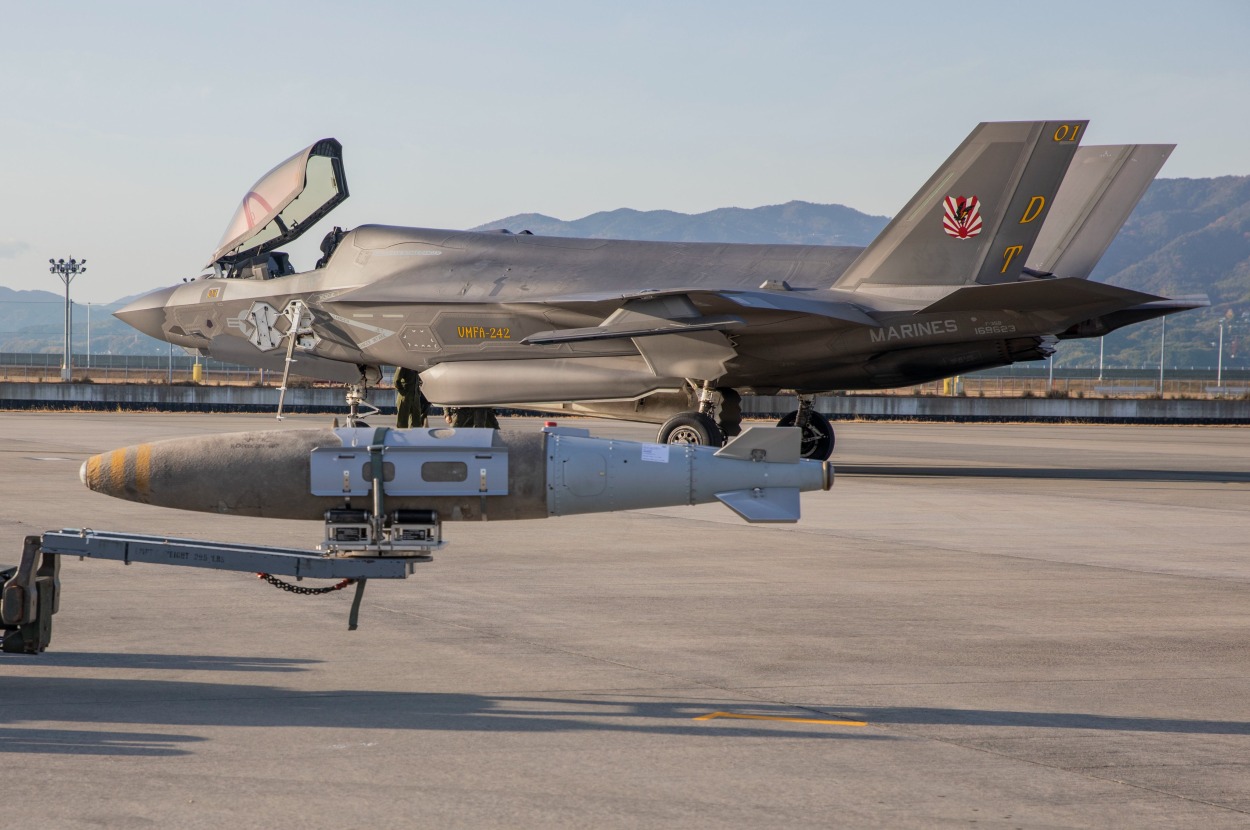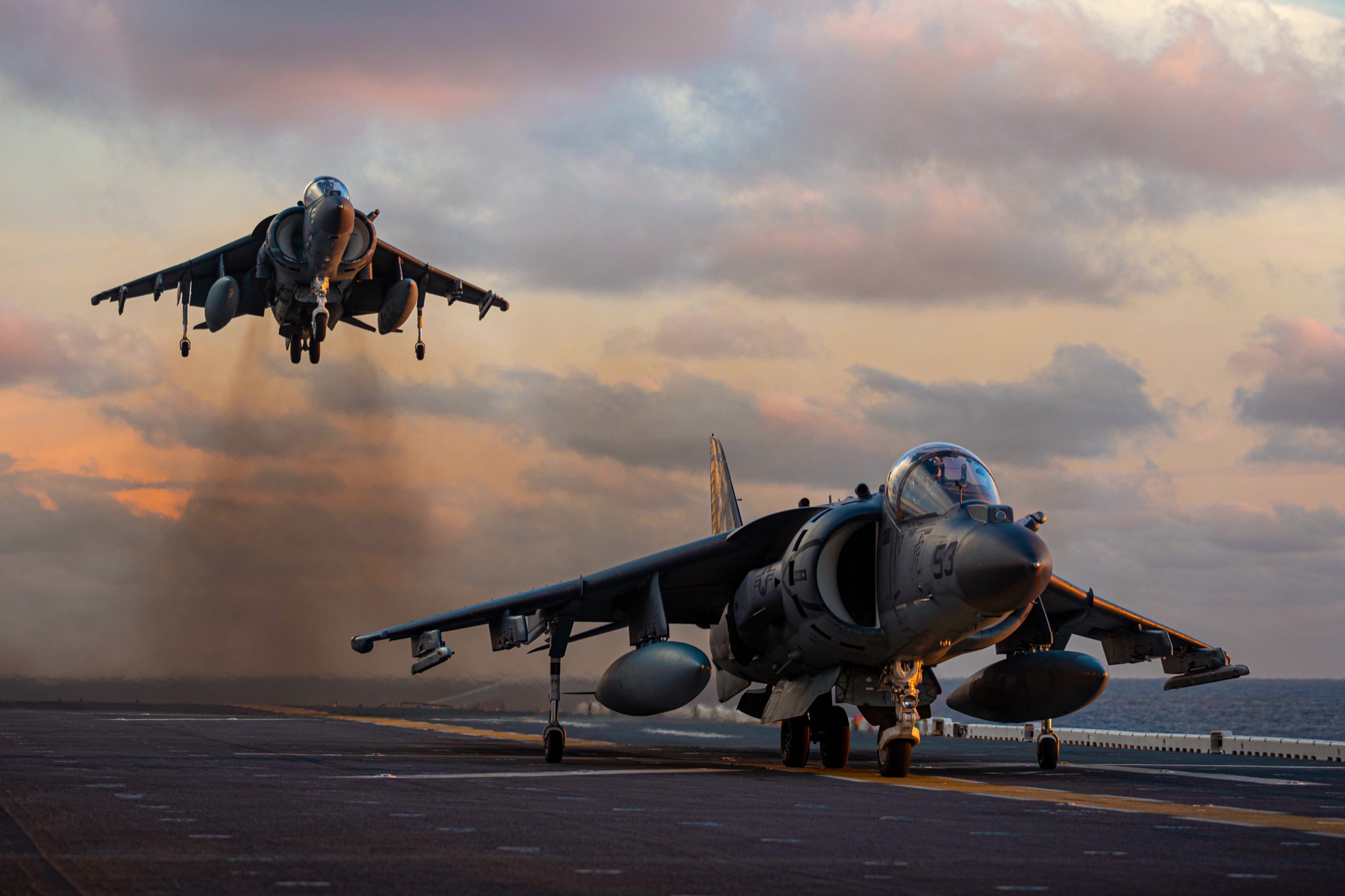Marine Fighter Attack Squadron (VMFA) 542, operating under the 2nd Marine Aircraft Wing (MAW), has attained a significant milestone by becoming the first East Coast F-35B Lightning II Joint Strike Fighter squadron in the Fleet Marine Force to achieve initial operational capability.
This achievement, effective February 5, marks a substantial step forward in the Corps’ deployment of advanced aircraft for expeditionary warfare purposes.
The attainment of initial operational capability signifies that VMFA-542, also known as the “Tigers,” now possesses an adequate number of operational F-35B Lightning II aircraft, trained pilots, maintenance personnel, and support equipment to independently sustain its mission essential tasks (METs).
These METs encompass various critical activities, including close-air support, offensive anti-air warfare, strike coordination and reconnaissance, and electronic warfare.
In a statement, Lt. Col. Brian Hansell, the commanding officer of VMFA-542, remarked, “VMFA-542 is the first operational fifth-generation squadron in II Marine Expeditionary Force, giving the aviation combat element the most lethal, survivable, and interoperable strike fighter in the U.S. inventory.”
“The F-35B is unmatched in its capability to support Marines against the advanced threats that we can expect in the future,” Hansell emphasized.
The attainment of initial operational capability also represents a significant step towards VMFA-542’s ultimate goal of achieving full operational capability and completing its transition to the F-35B Lightning II, a process initiated in December 2022.

VMFA-542 operates as a subordinate unit of the 2nd MAW, serving as the aviation combat element of the II Marine Expeditionary Force.
“I am extremely proud of the Marines and Sailors of VMFA-542,” said Col. James T. Bardo, commanding officer of Marine Aircraft Group 14, the parent command of VMFA-542. “Achieving initial operational capability at the pace and precision of which they did truly demonstrates what an exceptional unit this is. This milestone demonstrates their hard work, ingenuity, and perseverance.”
Nonetheless, this milestone underscores the Marine Corps’ commitment to maintaining a cutting-edge and effective aviation capability, ensuring readiness to meet the challenges of modern warfare scenarios.
The deployment of the F-35B Lightning II by VMFA-542 on the East Coast also solidifies its role as a vital asset in supporting expeditionary operations and enhancing the Marine Corps’ overall combat effectiveness.
The distinctive short takeoff and vertical landing (STOVL) capability of the F-35B provides unmatched operational flexibility.
This feature enables the aircraft to operate from austere bases and amphibious assault ships, negating the requirement for extensive runways and significantly enhancing the Marine Corps’ range and responsiveness.
Marine Attack Squadron 542 (VMA-542) ‘Tigers’
On December 1, 2022, VMA-542 concluded the retirement of its remaining Harrier aircraft and transitioned to the F-35B Lightning II.
Subsequently, the squadron received its inaugural F-35B on May 31, 2023, marking a pivotal moment as it became the Marine Corps’ first East Coast squadron to operate the F-35B fleet following the attainment of Safe For Flight certification on August 11, 2023.
As of February 5, the unit has now achieved initial operational capability for the F-35B Lightning II Joint Strike Fighter, signaling a key milestone in its operational readiness. The squadron is now progressing towards attaining full operational capability.
With a storied history dating back to its activation in March 1942 as Marine Night Fighter Squadron 542, equipped with Grumman F6F-3N Hellcats, the unit has been actively engaged in numerous conflicts.
Notably, during World War II, it played a crucial role in the Pacific theater, including participation in the Battle of Okinawa in 1945.

Redesignated as Marine All-Weather Fighter Squadron 542, the unit transitioned to Grumman F7F-3N/4N Tigercats in 1948 before supporting Allied forces during the Korean War.
Following its return to the continental United States in 1951, the squadron transitioned to the Douglas F3D-2 Skyknight, the first jet-powered fighter, and later to the Douglas F4D-1 Skyray in 1958.
The squadron was redesignated VMFA-542 upon adopting the McDonnell Douglas F-4B Phantom II in 1963. It played a crucial role in combat missions across Southeast Asia during the Vietnam War until its deactivation in January 1970.
Reactivated in January 1972 as the USMC’s second AV-8A Harrier squadron at MCAS Beaufort, South Carolina, the unit was known as VMA-542 and relocated to MCAS Cherry Point in 1974. The squadron completed its transition to the upgraded Harrier II in May 1986.
Throughout its operational history, while operating the Harrier II, VMA-542 provided support for various US-led military campaigns, including Operations Desert Shield and Desert Storm, Noble Anvil, Iraqi Freedom, Enduring Freedom, Odyssey Dawn, Odyssey Lightning, and Inherent Resolve.
- Contact the author at ashishmichel(at)gmail.com
- Follow EurAsian Times on Google News




